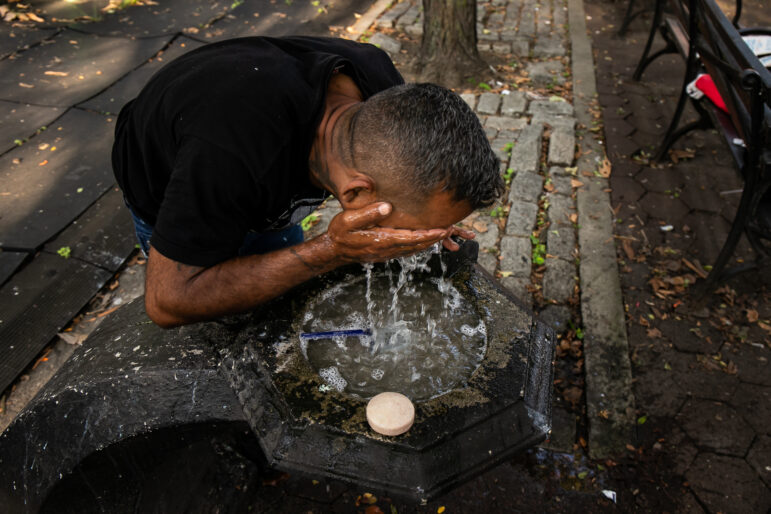You spent an unseemly amount of August fretting over your top fantasy draft picks. Then you’ve spent the past week patting yourself on the back for your uncanny acumen.
Yet as September begins, you face a vexing question: Should I start ALL my top players in Week 1?
You never want to overthink your lineup. But because of nagging injuries, contract holdouts and general rust, you don’t necessarily want to follow your draft rankings religiously in the openers.
Here are some headliners to watch, and maybe keep on your bench, this weekend:
Brandon Aiyuk (49ers WR); His holdout nearly sent him packing, but Aiyuk is still in Santa Clara, where we’re guessing he spends most of Monday night watching other Niners matriculate the ball down the field against a formidable Jets defense.
FILE – San Francisco 49ers wide receiver Brandon Aiyuk (11) warms up during a practice ahead of the Super Bowl 58 NFL football game Saturday, Feb. 10, 2024, in Las Vegas. (AP Photo/John Locher, File)
CeeDee Lamb (Cowboys WR): He’s now a very rich guy, and the unquestioned No. 1 wideout from last season. But the risk of the dreaded soft tissue injury could mean Dallas breaks him in slowly, especially against a good Cleveland defense.
Dallas Cowboys wide receiver CeeDee Lamb works out during an NFL football practice at the team’s training facility, Wednesday, Aug. 28, 2024, in Frisco, Texas. (AP Photo/Tony Gutierrez)
Ja’Marr Chase (Bengals WR): Another holdout in danger of showing rust, if he signs at all, the former LSU great would be seeing a very mediocre New England defense. So he could go off. Or he could be constantly off the field because Cincinnati locks up a W in the first 15 minutes.
Cincinnati Bengals’ Ja’Marr Chase stands on the sidelines prior to an NFL preseason football game Thursday, Aug. 22, 2024, in Cincinnati. (AP Photo/Jeff Dean)
Jahmyr Gibbs (Lions RB): He’s a borderline first-round pick facing an ordinary Rams defense. But he was injured most of the preseason and is in a bit of a timeshare with David Montgomery anyway. You’ll be starting him most of the year, but not right away.
Detroit Lions running back Jahmyr Gibbs runs the ball during an NFL football practice in Allen Park, Mich., Monday, July 29, 2024. (AP Photo/Paul Sancya)
Justin Herbert (Chargers QB): The former phenom looked shot the second half of ‘23, and he may not be much healthier in ‘24. Does he have ANY reliable receivers? We’d wait for some on-field evidence, even though he’s looking at a meager Las Vegas on Sunday.
Los Angeles Chargers quarterback Justin Herbert warms up before a preseason NFL football game against the Dallas Cowboys, Saturday, Aug. 24, 2024, in Arlington, Texas.(AP Photo/Gareth Patterson)
Aaron Rodgers (Jets QB): Now no real fantasy maven would dare start the elderly narcissist against one of the NFL’s top defenses. But some fanboys won’t be able to resist taking a shot with the Achilles Heel. Start one of the two dozen better options instead.
New York Jets quarterback Aaron Rodgers (8) looks on during a preseason NFL football game against the New York Giants Saturday, Aug. 24, 2024, in East Rutherford, N.J. (AP Photo/Adam Hunger)
Sitting stars
A season opener in the “football” hotbed of São Paulo, Brazil? Everything about this NFL cash grab screams low-scoring slog, especially if the soccer field starts getting torn up. So be very wary of most Packers and Eagles. … Jets RB Breece Hall will get off to a slow start vs. Niners. … Same for Chiefs RB Isiah Pacheco vs. Baltimore. … You probably should watch a game or two before declaring winners in committee backfields in Tennessee, Pittsburgh and Washington. … And until Miami’s backfield situation clarifies, think twice about starting Raheem Mostert.
New York Jets running back Breece Hall (20) looks on during an NFL football joint practice with the Carolina Panthers Thursday, Aug. 15, 2024, in Charlotte, N.C. (AP Photo/Matt Kelley)
Matchup game
We’re not very high on Vikings RB Aaron Jones, except this week against the Giants. … Carolina’s limited defense will cause strong starts for the Saints’ Alvin Kamara and Chris Olave. … Vegas RB Zamir White will run through the Chargers. …With uncertainty surrounding Chase in Cincy, Tee Higgins will likely score at least once vs. Patriots. … QB Joe Burrow will also thrive against the NFL’s worst team. … Niners will rely heavily on Deebo Samuel and George Kittle against the Jets. .,, And neither rookie QB phenom has a tough matchup, so roll the dice on Bears’ Caleb Williams vs. Tennessee and Washington’s Jayden Daniels against Tampa Bay.
FILE – Minnesota Vikings running back Aaron Jones (33) is seen after an NFL football training camp, July 27, 2024 in Eagan, Minn. (AP Photo/Bruce Kluckhohn, File)
Injury watch
Universal No. 1 draft pick Christian McCaffrey nursed an injury the past few weeks, but you MUST start him forevermore. … The list of questionables is filled with standouts likely to play: Rams WR Puka Nacua, Miami WR Jaylen Waddle, Vegas wideout Davante Adams, Jaguars WR Christian Kirk, Chicago receiver Keenan Allen, the Vikings’ Jordan Addison, Steelers RB Jaylen Warren and three tight ends: Detroit’s Sam LaPorta, Cleveland’s David Njoku and Raiders rookie Brock Bowers.
FILE – San Francisco 49ers running back Christian McCaffrey before a preseason NFL football game against the New Orleans Saints in Santa Clara, Calif., Aug. 18, 2024. (AP Photo/Godofredo A. Vásquez, File)
Deepest sleeper
Hard to pick a universally undrafted dude for Week 1, but how about Dallas’ Jalen Tolbert? The Cowboys’ No. 3 wideout could see many more targets if Lamb winds up being a very expensive decoy. He could be roaming free in the Browns’ secondary all day, which may or may not be noticed quickly by newbie color commentator Tom Brady.
Dallas Cowboys wide receiver Jalen Tolbert (1) warms up before playing against the Los Angeles Rams in an NFL preseason football game, Sunday, Aug.11, 2024, in Inglewood, Calif. Rams defeated the Cowboys 13-12. (AP Photo/Jeff Lewis)
The Thursday/Friday picks
Ravens at Chiefs (-2½)
Pick: Ravens by 3
Eagles vs. Packers (+1½)
Pick: Eagles by 3
Baltimore Ravens quarterback Lamar Jackson (8) is pressured by Kansas City Chiefs defensive tackle Chris Jones during the first half of the AFC Championship NFL football game in Baltimore, Sunday, Jan. 28, 2024. Kirk Cousins, Chris Jones and Mike Evans are among the best players who will be available on the open market unless their teams use a franchise tag by March 5. They’ll be joined by running backs Derrick Henry, Saquon Barkley and Josh Jacobs, edge rushers Josh Allen, Brian Burns and Danielle Hunter and several other talented players.(AP Photo/Terrance Williams, File)
You can hear Kevin Cusick on Wednesdays on Bob Sansevere’s “BS Show” podcast on iTunes. You can follow Kevin on Twitter — @theloopnow. He can be reached at kcusick@pioneerpress.com.
Related Articles
The Loop: Nipsey Russell’s 2024 NFL Preview
The Loop 2024 Fantasy Football Preview: Our Favorites — Never underestimate value of senior moments
The Loop 2024 Fantasy Football Prevew: Our non-favorites — Vikings aren’t looking like fantasy gold this season
The Loop 2024 Fantasy Football Preview: The Rookies — You’re in good hands with these receiving gems




